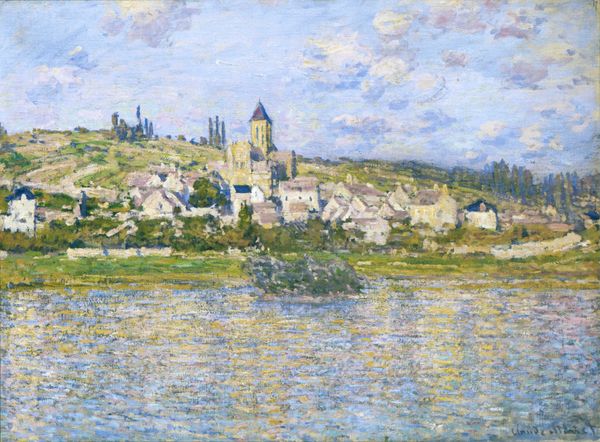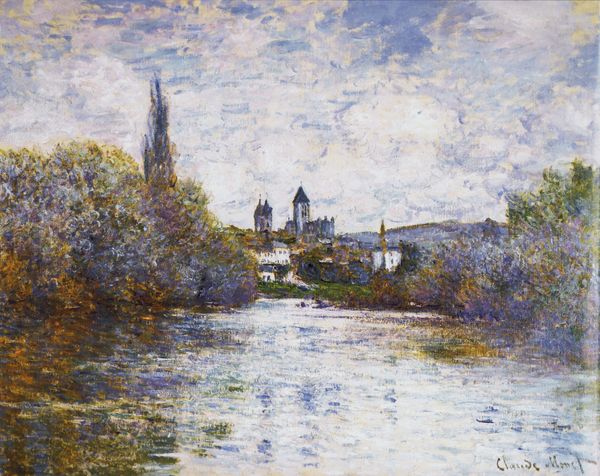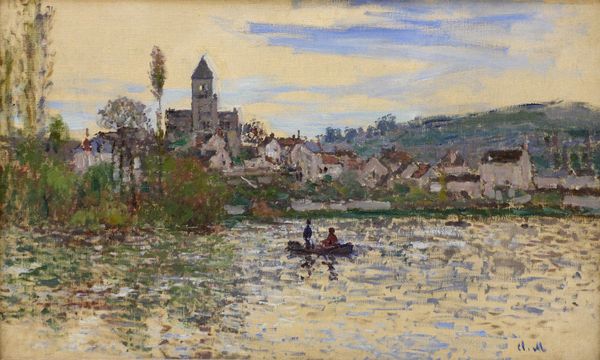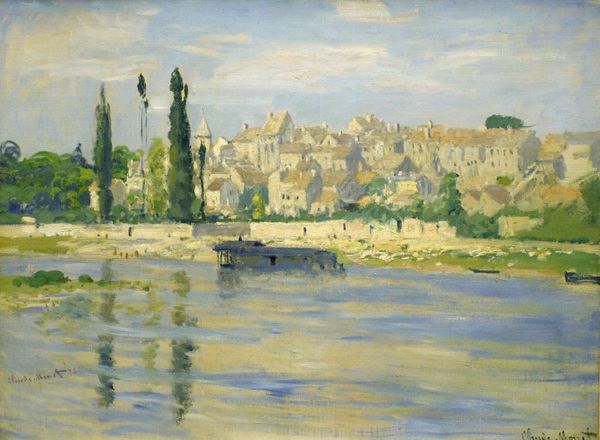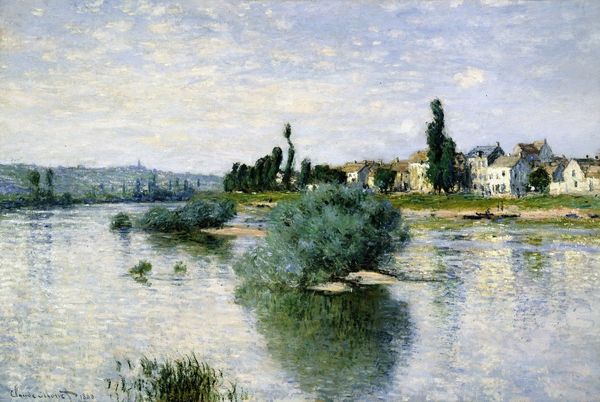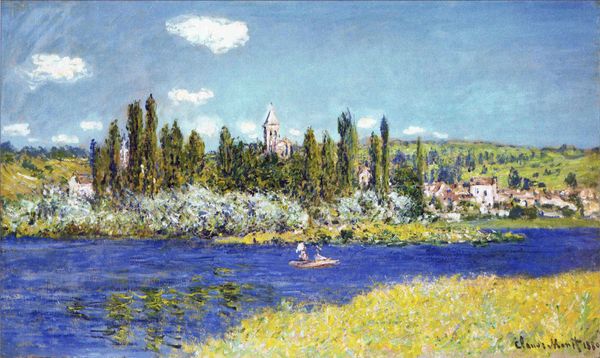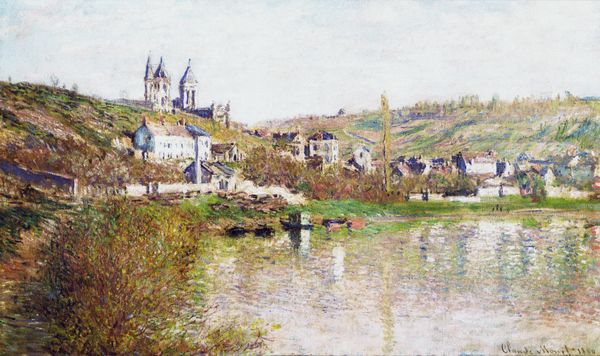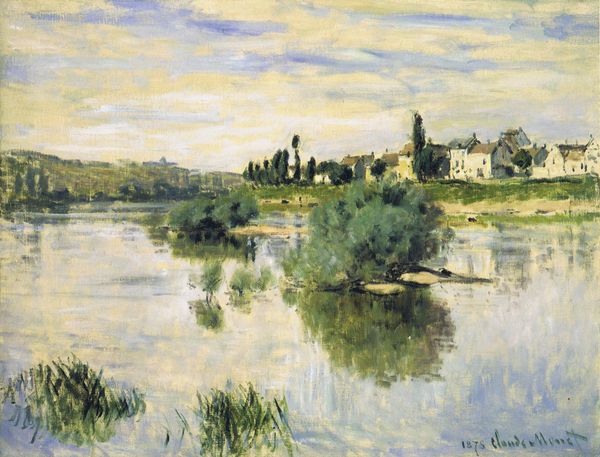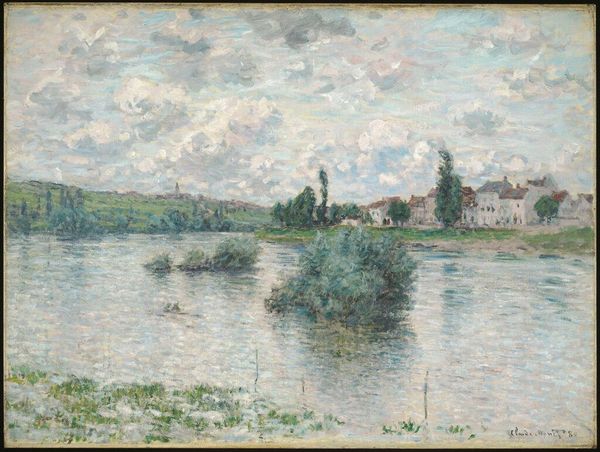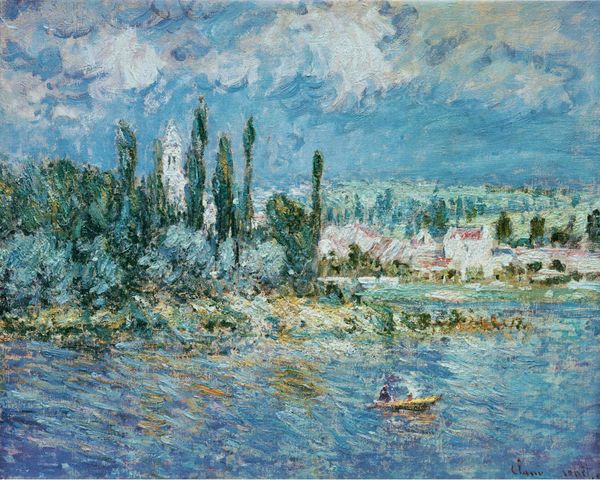
painting, plein-air, oil-paint
#
impressionist
#
sky
#
painting
#
impressionism
#
impressionist painting style
#
plein-air
#
oil-paint
#
landscape
#
impressionist landscape
#
oil painting
#
water
#
cityscape
Copyright: Public domain
Curator: Here we have Claude Monet's "Vetheuil in Summer," painted in 1880. It captures the essence of the French countryside with its characteristic Impressionistic style. Editor: It's overwhelmingly calm, isn’t it? The reflection of the village on the water creates a dreamy, almost blurry effect, which softens the whole landscape. Curator: Monet was quite interested in the public role of art, specifically how it could convey these transient moments of everyday life to a rapidly industrializing society. The choice of Vetheuil itself is significant; he lived there for a time and documented its changing appearance across seasons. Editor: What interests me are the brushstrokes themselves. Notice how the paint has been applied so liberally. You can almost feel the texture, the way the light would have bounced off the surface. It emphasizes the very act of making and recording his impressions. What do you suppose he was paying in material costs, painting plein air on this scale? Curator: Certainly the cost of the materials speaks to a shift in the art market—with increasing demands from collectors and the growing gallery system. Also interesting to note, during this period Monet was facing personal struggles including the declining health of his wife. This potentially influences his choice to paint a town he considered to be pastoral and comforting. Editor: But I can't ignore how those brushstrokes, those dabs of paint, are a product of industrial advances. New pigments, manufactured on a massive scale, gave Monet this riot of color. Without them, could he have achieved this shimmering effect on the Seine? Or would Vetheuil have been represented differently? Curator: That’s a good point, highlighting how the very availability of those materials changed artistic production! Seeing "Vetheuil in Summer" this way, it represents a convergence of personal, social, and technological elements that were characteristic of late 19th century France. Editor: Exactly. It invites us to look at the townscape not just as an object of beauty, but also as a landscape formed by processes of labor and materiality. It seems his commitment to capturing the ephemerality of the fleeting moment went hand in hand with shifts in modes of production. Curator: A fantastic look, thanks! Now, listeners, take a moment to absorb this work in its social context and see if it triggers fresh thoughts of your own. Editor: Agreed, get close to the painting and reflect on how the work asks questions about the artist's place in this rural economy.
Comments
No comments
Be the first to comment and join the conversation on the ultimate creative platform.
